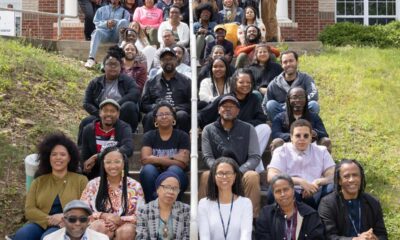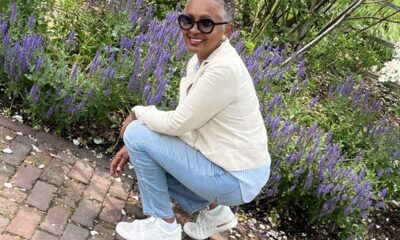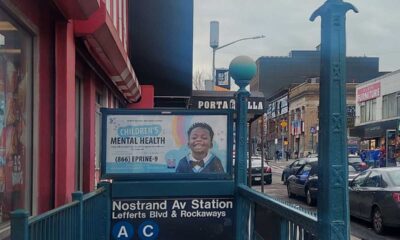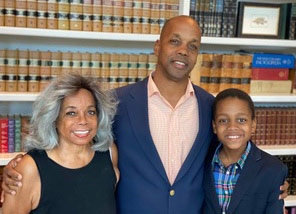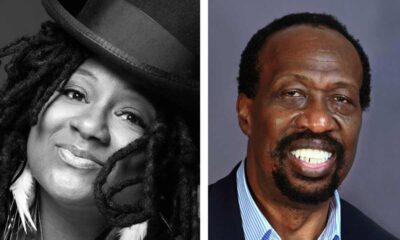Interview
Qiana Mickie: Growing Community Farms and Gardens in Brooklyn

By Fern Gillespie
The theme for Earth Month 2024 is “Planet vs. Plastics.” For Qiana Mickie, Executive Director, of NYC Mayor’s Office of Urban Agriculture, “Planet vs. Plastic” is part of her everyday mission of advocating environmental justice, urban agriculture, and food justice in the five boroughs.
This Hampton University marketing grad has spent almost 15 years promoting fresh, healthy, locally grown foods in New York City’s urban community gardens and farms. Since Mayor Eric Adams appointed Mickie in 2022, her Urban Agriculture Office has been situated in the Mayor’s Office of Climate & Environmental Justice. Our Time Press spoke with Qiana Mickie about the community impact of urban farms and gardens on Brooklyn.
OTP: How did you get interested in agriculture, urban gardening and food justice?
QM: My first job as a teen was pruning and weeding in city parks, playgrounds, and gardens throughout the five boroughs. As I got older, I continued to volunteer and learn more about environmental justice and social justice. When I became a mother, I began to see the differences in healthy food access between my current neighborhood, Harlem, and other parts of Manhattan.
I began volunteering with a group called Harlem for Change, which kick-started my interest in bringing farm fresh food into my neighborhood. This opportunity led me to community advocacy training provided by Just Food, a local nonprofit. As a community advocate and later, Executive Director of Just Food, I continued to learn and get more involved with food justice and policy on the city, state, federal, and international levels.
OTP: What are the benefits of turning empty lots in urban neighborhoods into gardens?
QM: Empty lots can often be eyesores in neighborhoods or if left unattended, can draw unwanted effects of neglected areas like garbage. Space is so limited in the city; we should be proactive about converting empty lots into havens for our communities. Red Hook Community Farm is striving to grow enough food for many people in their community.
Some urban farms are small businesses and have paid staff to manage the farm and operations. Urban gardens tend to be smaller in size and the land is stewarded by individual volunteer gardeners with the collective mission to grow edible or non-edible items like flowers for themselves or smaller number of community members.
OTP: What are some of the outstanding urban farms and gardens in Brooklyn’s Black neighborhoods?
QM: According to NYC Parks/GreenThumb, there are approximately 245 GreenThumb community gardens in the city network – the most in any borough! There are also wonderful gardens and farms in neighborhoods like Bedford-Stuyvesant and Brownsville, and East New York, such as East New York Farms and the Powell Street Garden, stewarded by the gardeners of Isabahlia Ladies of Elegance Foundation, to name a few.
I’m inspired by the youth leaders making great healthy compost and growing food on NYCHA properties like Howard Houses and Bayview Houses through the efforts of Green City Force and Compost Power. I hope everyone feels their neighborhood garden is outstanding and it’s our ongoing work to ensure more neighborhoods have great gardens and growing spaces.
OTP: You are involved with a City MWBE program dealing with urban gardening entrepreneurship. Why are you promoting urban gardening entrepreneurship for minority business owners?
QM: Many urban agriculture stakeholders have great skills that are needed such as growing, landscaping, and culinary arts. While many in urban agriculture like to volunteer their services, an increasing number of people want to leverage their skill sets and training to build a sustainable business.
As part of Mayor Adams’ M/WBE agenda, MOUA is building bridges to free resources and information sessions, such as the NYC SBS Jumpstart M/WBE information sessions, for eligible small businesses in food, agriculture, and sustainability, to help increase the city’s M\WBE vendor pool and improve pathways to city-based procurement.
New York City is a city of small businesses. Having more urban agriculture-based entrepreneurs in the city is what’s good for their business viability, New York City communities, and the environment.
OTP: What are some of your NYC urban agriculture successes since starting the department?
QM: In less than two years, we have developed and released the city’s first urban agriculture report; created the “Reimagine Farm to School in NYC” initiative – which is leveraging New York State and USDA Farm to School funds to increase agriculture education for students in the classroom and in urban/rural farms; and developed the city’s first farmer-focused training to help more small-scale New York farmers apply for school food procurement contracts.
The Farm to School effort is in collaboration with NYCPS Office of Food and Nutrition Services. MOUA has utilized this opportunity to demonstrate how to increase food equity in the school food pipeline and programming.
OTP: You outreach to schools. What is the feedback you receive from Black children on urban gardening?
QM: More time than not, I hear from students, including Black and Brown students, how curious they are about learning to grow food in gardens or indoor environments like hydroponics or aquaponics, and how excited they are to learn new healthy and tasty recipes from locally grown produce.
More and more, children want to learn from growers and farmers of color who look like them – and are especially excited to meet and see urban farmers working in their own neighborhoods. It makes urban agriculture much more tangible. The positive feedback from children and parents about having more access to fresh food and agriculture education is the inspiration for our continued efforts to reimagine farm-to-school activities and support the development of more learning and school gardens like the Learning Garden in Bergen Beach, Brooklyn.


